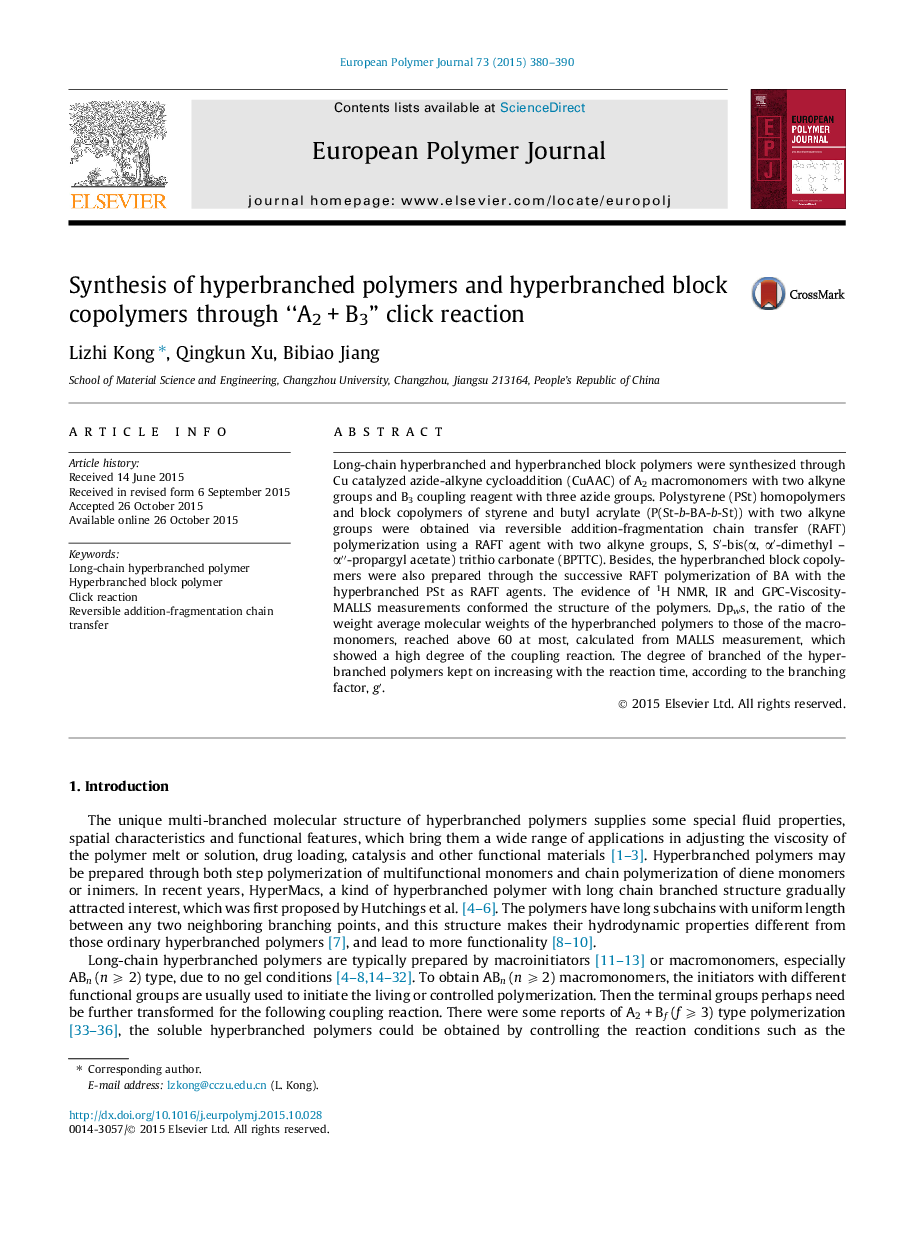| کد مقاله | کد نشریه | سال انتشار | مقاله انگلیسی | نسخه تمام متن |
|---|---|---|---|---|
| 1400386 | 1501362 | 2015 | 11 صفحه PDF | دانلود رایگان |

• Synthesis of long-chain branched polymers combining RAFT polymerization and CuAAC.
• Trend of the degree of branching with the degree of polymerization.
• Two routes for the preparation of the hyperbranched block copolymers.
Long-chain hyperbranched and hyperbranched block polymers were synthesized through Cu catalyzed azide-alkyne cycloaddition (CuAAC) of A2 macromonomers with two alkyne groups and B3 coupling reagent with three azide groups. Polystyrene (PSt) homopolymers and block copolymers of styrene and butyl acrylate (P(St-b-BA-b-St)) with two alkyne groups were obtained via reversible addition-fragmentation chain transfer (RAFT) polymerization using a RAFT agent with two alkyne groups, S, S′-bis(α, α′-dimethyl – α″-propargyl acetate) trithio carbonate (BPTTC). Besides, the hyperbranched block copolymers were also prepared through the successive RAFT polymerization of BA with the hyperbranched PSt as RAFT agents. The evidence of 1H NMR, IR and GPC-Viscosity-MALLS measurements conformed the structure of the polymers. Dpws, the ratio of the weight average molecular weights of the hyperbranched polymers to those of the macromonomers, reached above 60 at most, calculated from MALLS measurement, which showed a high degree of the coupling reaction. The degree of branched of the hyperbranched polymers kept on increasing with the reaction time, according to the branching factor, g′.
Figure optionsDownload as PowerPoint slide
Journal: European Polymer Journal - Volume 73, December 2015, Pages 380–390